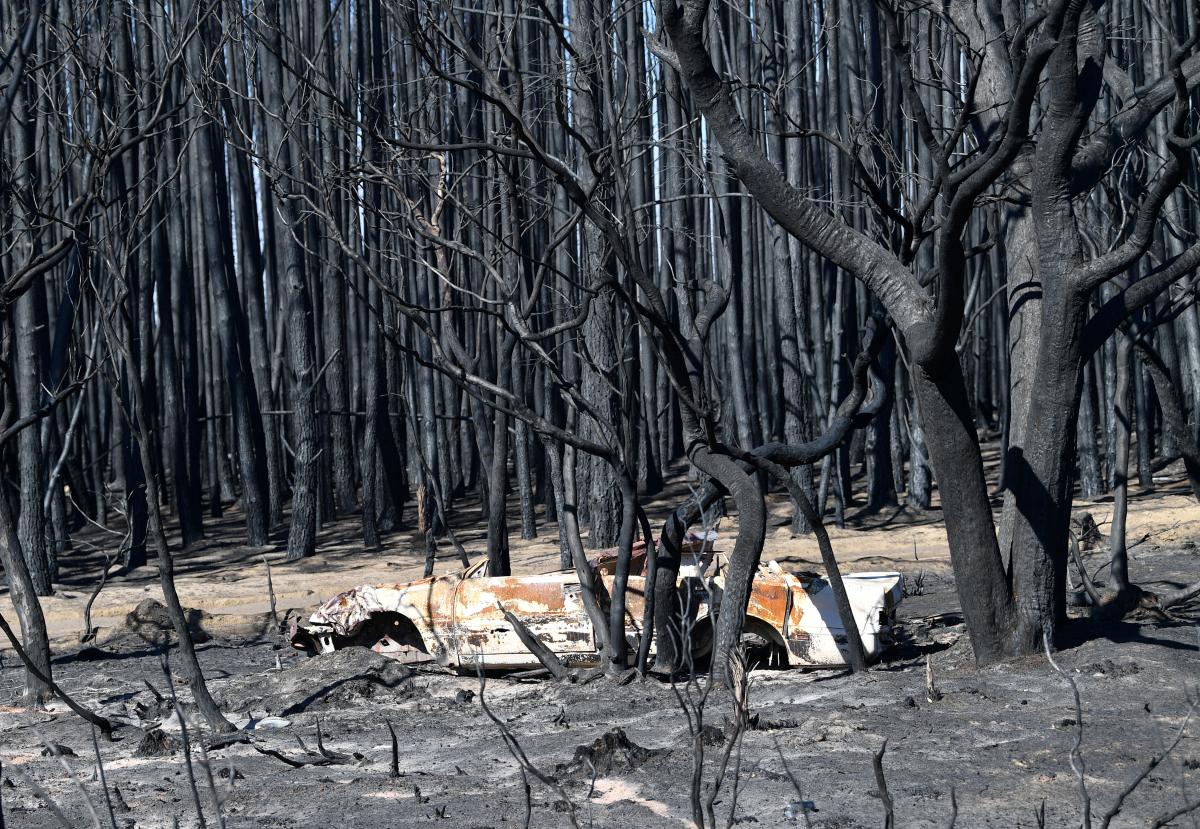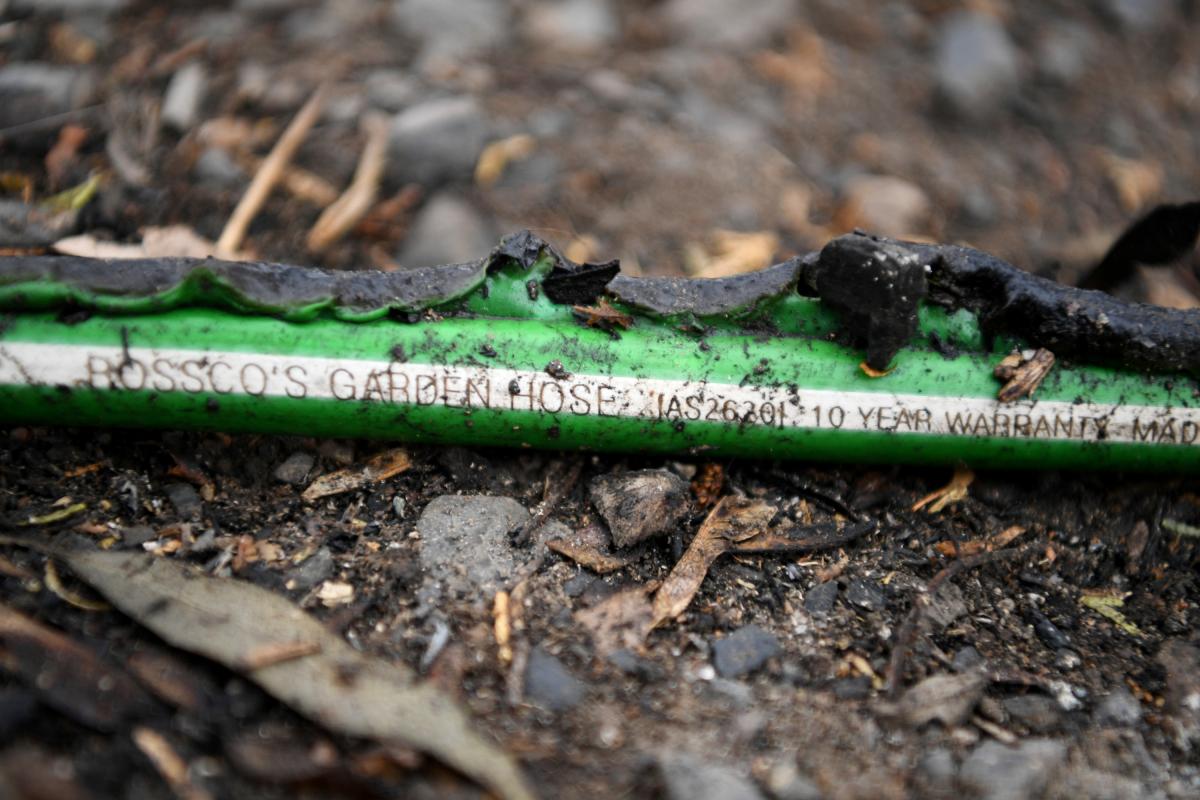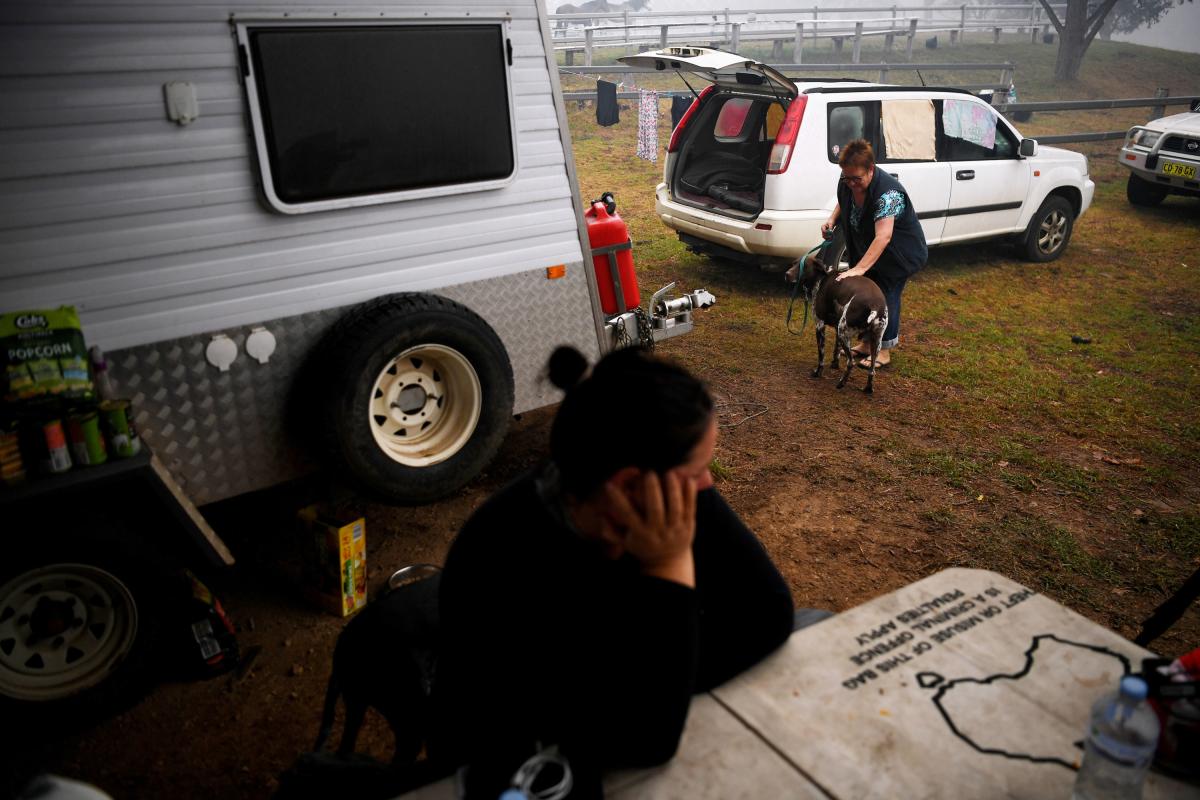
Australia resident on raging fires: We praise firefighters and pray for rain
Sydney-based Larysa Tsypkalenko, a former Odesa native, sat down with UNIAN to tell about the Green Continent fighting massive fires, local residents surviving in difficult conditions, saving their neighbors and injured animals.
Large-scale forest fires affecting several Australian states are on top agenda globally. The disaster, which is so difficult to stop, has already taken thirty lives, while dozens are reported missing. Thousands of homes were destroyed, tremendous damage was done to farms, tourism infrastructure, while millions of animals died across wide areas... Experts say the situation may further deteriorate.
According to official figures, about 38,000 ethnic Ukrainians live in Australia. Many of them reside in the regions most affected by fires – in the states of Victoria, South Australia, and New South Wales, whose capital is Sydney, the country's largest city.
UNIAN got in touch with the former Odesa native, Larysa Tsypkalenko, who has been living in Sydney for over 20 years, to learn about what's happening.
Today, Australia fires are all across world news...

They broke out before but compared with what we're seeing today it was nothing. The fire breaks out for various reasons: the human factor (isolated cases), sometimes a lightning strike, but mainly because of eucalyptus spontaneously igniting amid the heat. These trees contain a huge amount of oil and light up like matches (Sydney is surrounded by national parks full of these trees). Fire comes from sparks that the wind carries for miles.
The situation is aggravated by the consequences of climate change – severe drought and record temperatures reaching almost 50 degrees Celsius. Our pool has dried out by two-thirds, while our ACs malfunction because of the heat... My husband, who was born and raised in Sydney, says he remembers nothing like this in his lifetime: neither a drought of such scale, nor so large-scale fires...
It sometimes happens that several different fires converge and the flame absorbs vast territories that can only be extinguished from air. Similarly, there's hardly accessible terrain. In certain cases, firefighters take water from swimming pools owned by local residents: a helicopter hangs above them and draws water into a kind of a large bag ... In connection with an emergency, no permission is required from the owner – the decision is made by the state body...
What about a tourist flow?
It's significantly lower than usual, although we have summer now. Who will travel to the areas engulfed in fire?! ... The number of domestic tourists has also decreased – we could not go on vacation either. In popular travel locations fires are raging and many roads have been blocked.
Among other things, it is likely that you will fall into a "trap" or a flaming tree can fall on your car.
While in Sydney all municipal transport is still working, in "burning spots" it operates with restrictions or even halts. There are closed shops, interruptions in food supply. There are isolated cases of price hikes and even looting.
Some tourist locations have gone extinct. For example, a severe fire brought a lot of trouble on Kangaroo Island (South Australia). It's fully burned out, including the luxurious five-star hotel Southern Ocean Lodge. Everything is destroyed – scorched earth ...

And what is the situation like in Sydney and the surrounding area?
The fires were on the outskirts, one strong one is 50 km from our house ... Fortunately, they were quickly put out after special chemicals were sprayed. Fire brigades worked there, helicopters dumped fresh water. After all, ocean water cannot be used – salt will lead to the irretrievable death of all vegetation ...
National parks in Sydney are periodically closed (depending on the situation with fires), and they only let local people in after checking their residence registration.
We have to save water. Using garden hoses is now prohibited, so we collect it buckets. Due to restrictions, many plants died, but in other places where the situation is very serious, it’s even worse: they bring in bottled water so people can drink and use for cooking and watering animals...
Farms are on fire, too. In NSW alone, more than 13,000 cows and sheep died. And, according to experts, this figure may increase. Now farmers examine the animals that survived and bury the dead.
Sydney is covered with smog. People suffering from respiratory diseases wear masks. Just the other day, a middle-aged man died of an asthma attack, which was caused, according to doctors, by smoke. One some days, the haze clears (probably it depends on the direction of the wind) and people stop wearing masks... In such cases everything seems to be normal, but after that there comes bad news from our friends living 75 km from Sydney: on a nearby street, fire destroyed six households. Then there were several more fires – over the past two weeks they got evacuated three times. And you understand that everything can change at any moment...
How are people evacuated? How do you know that you need to flee? And where do you flee?
I must say right away: such a large-scale evacuation involving the army and navy is being carried out for the first time in Australia. In some locations, people flee to the coast, from where they are taken by boats. If authorities are aware of the impending disaster, the employees of the relevant departments inform locals – they knock on people's doors and leave a notice. Everyone is warned about the evacuation and, if people agree to leave their homes, they ask if help is needed. For example, if someone is sick or can hardly move or doesn't have a car. In this case, they will pick them up and take them to a safe place.
But there are different situations. Say, many farmers refuse to leave and remain at home until the very end – they try to save livestock and property ... If someone refuses to evacuate, they warn them: their life is in danger and there is no guarantee that rescuers will come at the last moment – they can be cut all the way, roads can be blocked, etc. In other words, those who refuse are informed of the threat and they make a choice of their own.
And what if there's no alert in advance and they are aware of the danger too late?
There were precedents when they reported: "An emergency. Too late to evacuate. Seek refuge." But seek where? Where should we flee? We don't have any special shelters where the locals can hide from a fire. My husband says we will need to move to some vast open area. We have a large stadium. I already know that I will take family photos, documents, Timoshka (a pet dog) and run to this stadium...
What is the fate of people left homeless after fires?

In this disaster, various human qualities are manifested, including kindness, generosity and compassion. Sometimes, while evacuating, people do not have time to take even the most necessary items. So there are Australians who offer their homes for free. They do this on their own initiative: they invite the victims in their homes or provide free space (if they have several houses) until people can return home or solve the housing problem in some other way...
Fires are being put out by fighters, locals trying to save their homes, and volunteers. Three volunteers have already died. Two of them died as they were putting out the fire when their car rolled over. Two small children lost their fathers...
The other day, a 60-year-old high qualified rescuer died. A burning tree collapsed on him.
Is it true that a billion animals, including many koalas, have died in fires?
These are the preliminary data... Indeed, they died, many koalas suffered. They live on trees, they are very slow and have no time to escape. Also many kangaroos and other animals died. It happens that, having got out of a burning forest, affected animals come to people for help, asking for water. Some drink from home pools, while others drink from bottles.
The fires leave scorched earth – the surviving animals have nothing to eat. In hard-to-reach places from food is dumped from planes – carrots and sweet potatoes. Thousands of kilograms of food ...
What is the mood in Sydney now?
There is no mass panic. Of course, we worry – no one knows when the fires will stop or put out, and what will happen next. We don't know what will happen in the future with our environment, how the mass death of livestock will affect the provision of food ... In addition to the fact that many sheep were burned, there is another problem: the fire cut off part of the areas. Therefore, farmers simply dispose of an incredible volume of milk, because due to the closure of roads, no one can take it out...
I can only add: we praise firefighters and volunteers, and pray for rain...
***
It is still unknown how the Green Continent will recover after the disaster and what measures will be taken by the authorities to avoid (minimize) the recurrence of such large-scale fires. Farmers, travel companies and other businesses suffered enormous losses. Irreparable damage has been done to flora and fauna. Scientists say that in Australia, where a unique natural world has developed over millions of years, biodiversity is unlikely to be preserved in its previous form... They say, the main reason for the tragedy is global warming, which has affected the entire planet.
Larysa Kozova

